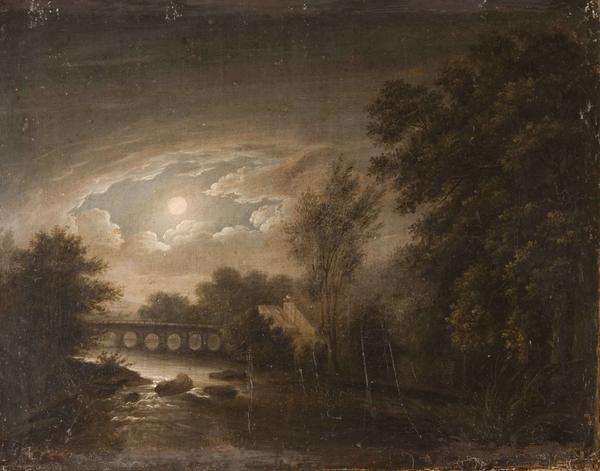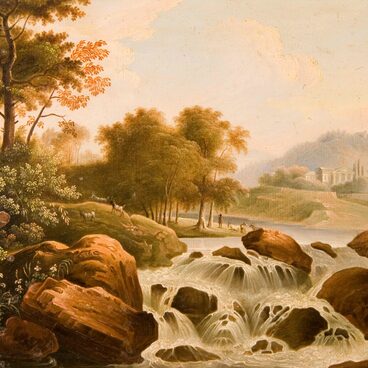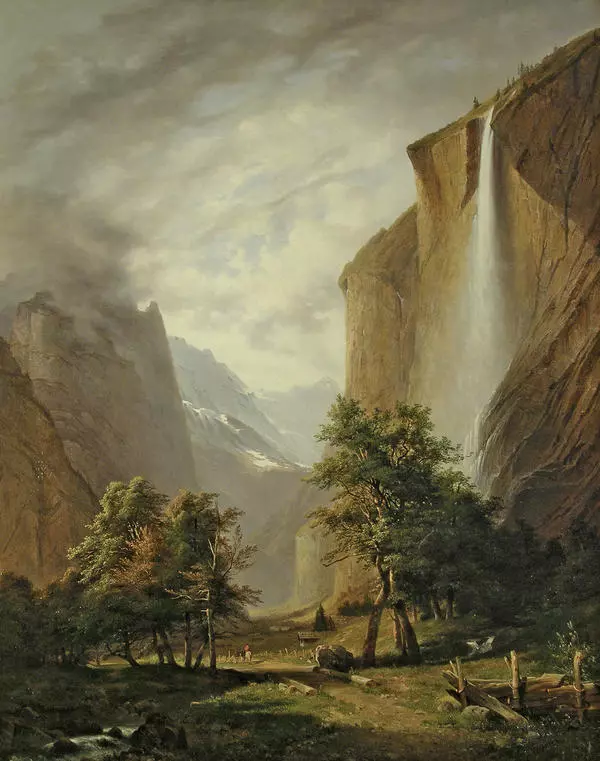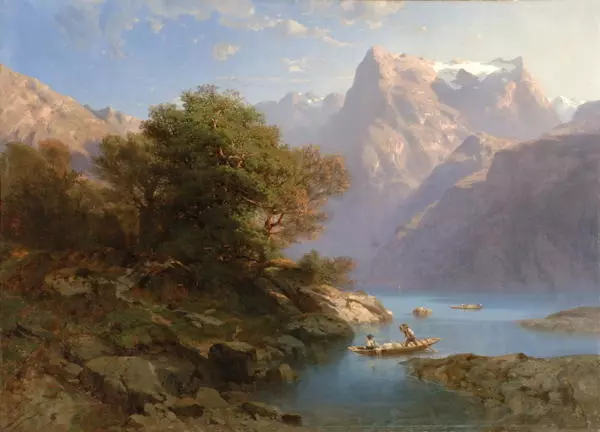For several centuries Switzerland was in the shadow of the leading European schools of painting. Nevertheless, the Swiss romantic painter Alexandre Calame (1810–1864) became the founder of the epic alpine landscape.
He was born into a family of stonecutters in the small Swiss town of Vevey and was originally supposed to continue the family business. However, in 1830 he joined the studio of the landscape painter François Diday, where he managed to create a type of landscape that art historians attribute to the Alpine school of painting. Calame became widely known in 1839 when he presented ‘The Storm on Handeck’ in the Paris Salon. Despite the fact that the artist had the opportunity to study the art of the Dutch landscape painters of the 17th century, the founders of French classicism Nicolas Poussin and Claude Lorrain, as well as the Barbizon painters, his style retained the peculiarity of a synthetic landscape.
The main subjects of his works were views of his native Switzerland. The artist managed to embody the motive of nature in his painting, using the signs of a specific area, which made it recognizable for the viewer. At the same time, he combined corners of different types and created a harmonious landscape not from nature, but in his workshop. Due to the competently distributed light contrasts, highlighting the distance, his work is full of grandeur and scale.
In the 1950s, Calame 's creative method became popular among his followers throughout the artistic world of Europe. In Russia, the so-called ‘Calame School’ included artists such as Arseny Meshchersky and Vladimir Orlovsky, who were able to adapt the peculiarities of his system to depict the motives of their native nature.
The collection of the Tarusa Art Gallery owns Calame’s painting “The Moonlit Night”. A small canvas depicts a night landscape. The full moon shines brightly in the dark sky, around which the clouds seem to have parted. The artist surrounds the composition with various trees with lush crowns. The moonlight illuminates their shadow-figures, reflected in the river, and reflects the views of the bridge and the building in the distance. The impression of the eternal movement of nature is created in the peaceful flow of the river and the dance of swirling clouds.
He was born into a family of stonecutters in the small Swiss town of Vevey and was originally supposed to continue the family business. However, in 1830 he joined the studio of the landscape painter François Diday, where he managed to create a type of landscape that art historians attribute to the Alpine school of painting. Calame became widely known in 1839 when he presented ‘The Storm on Handeck’ in the Paris Salon. Despite the fact that the artist had the opportunity to study the art of the Dutch landscape painters of the 17th century, the founders of French classicism Nicolas Poussin and Claude Lorrain, as well as the Barbizon painters, his style retained the peculiarity of a synthetic landscape.
The main subjects of his works were views of his native Switzerland. The artist managed to embody the motive of nature in his painting, using the signs of a specific area, which made it recognizable for the viewer. At the same time, he combined corners of different types and created a harmonious landscape not from nature, but in his workshop. Due to the competently distributed light contrasts, highlighting the distance, his work is full of grandeur and scale.
In the 1950s, Calame 's creative method became popular among his followers throughout the artistic world of Europe. In Russia, the so-called ‘Calame School’ included artists such as Arseny Meshchersky and Vladimir Orlovsky, who were able to adapt the peculiarities of his system to depict the motives of their native nature.
The collection of the Tarusa Art Gallery owns Calame’s painting “The Moonlit Night”. A small canvas depicts a night landscape. The full moon shines brightly in the dark sky, around which the clouds seem to have parted. The artist surrounds the composition with various trees with lush crowns. The moonlight illuminates their shadow-figures, reflected in the river, and reflects the views of the bridge and the building in the distance. The impression of the eternal movement of nature is created in the peaceful flow of the river and the dance of swirling clouds.






